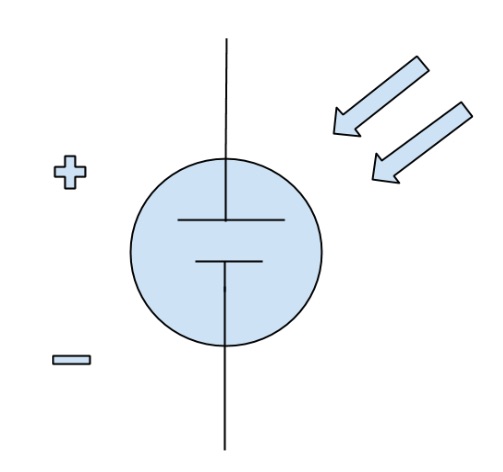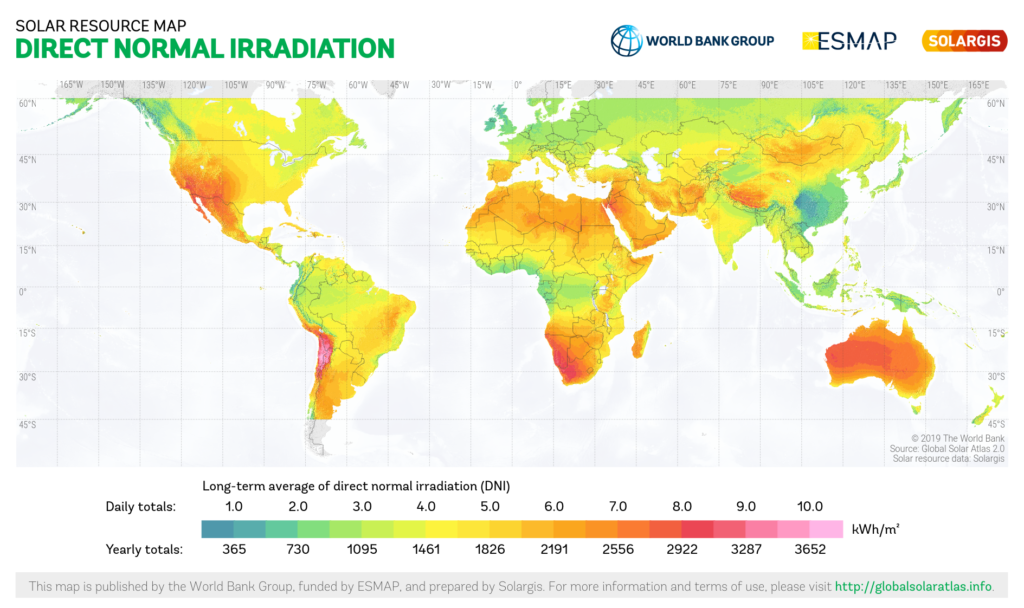A quick introduction to the terms commonly used in the Solar Efficiency discussions and a rule of thumb for quick efficiency calculations.
Solar Cell, Panel and PV System?
A solar cell, is a discrete unit, that produces electricity via the photovoltaic effect. As described in previous blog, there are many approaches to creating a solar cell. There are many factors that dictate a manufacturers choice – cost/availability of raw materials, end-use application (longevity, durability, flexibility, weight), efficiency, aesthetics etc.
A solar cell provides a + and – terminal much like a battery. Multiple terminals of solar cells can be connected together to form a Solar Panel. So a Solar Panel is essentially a collection of solar cells wired together. The wiring of solar cells dictates the power characteristics of a Solar Panel. Solar cells can be wired together in series or parallel. In addition a Solar Panel may have a mix of series/parallel connections. The power produced by a solar cell when exposed to sunlight is measured in Watt (W). This can be derived by multiplying the potential difference on it’s terminal Voltage (V) and the current flowing through it Amperes (I), W = V x I.

PV Symbol
Basic Physics 101:
- Solar Cells connected in Series: Voltage is added, Current remains the same
- Solar Cells connected in Parallel (not common): Voltage remains the same, Current is added
In an ideal Solar Panel (assuming no internal wiring losses and no shading), the Power output of the Solar Panel will be the Sum Total of the number of Solar Cells.
This also illustrates the problem of shading (or, partial shading). One underperforming solar cell (e.g. from shading) can bring down the performance of all cells connected in series.

Solar Cells in Series
A PV System is a collection of Solar Panels and may include electrical components like Charge Controller, Batteries (Power Storage) and Inverters. A Residential Roof Top PV System specification is different than a Utility Solar Farm PV System.

Efficiency Calculations and Rule of Thumb
Solar Power reaching a Solar Panel mounted on the surface of the Earth differs widely based on the location – latitude, time of the day, atmospheric conditions and other obstructions (trees, buildings etc). 1000 W/m2 is a common value used for Solar Efficiency calculations.


By © The World Bank, CC BY 4.0, https://commons.wikimedia.org/w/index.php?curid=73047799
Solar Cell Efficiency vs Solar Panel (Claimed) Output
Solar Cell manufacturers typically publish a performance datasheet that specifies lab test conditions and results (e.g. temperature, radiation, observed power characteristics).
Here is a datasheet from a popular Solar Cell manufacturer, SunPower/Maxeon.
Efficiency Calculation =
(3.63 / (.125 x .125))/1000 =
~ 23.2%
Many Solar Panel manufacturers conflate solar cell efficiency with claimed Solar Panel efficiency.
A good of rule of thumb is to calculate the solar panel efficiency by dividing its Power Output by its surface area (in m2).
E.g. The efficiency of a flexible Solar Panel
- Dimensions: 1000 mm x 600 mm
- Peak Power: 120W
(120/(1 x 0.6))/1000 = 20%

There are many factors leading to discrepancy in the efficiency between solar cells and solar panels. Some of these are:
- Spacing/gap between Solar Cells/Layout
- Solar Panel protection – Glass/ETFE
- Electrical losses in wiring